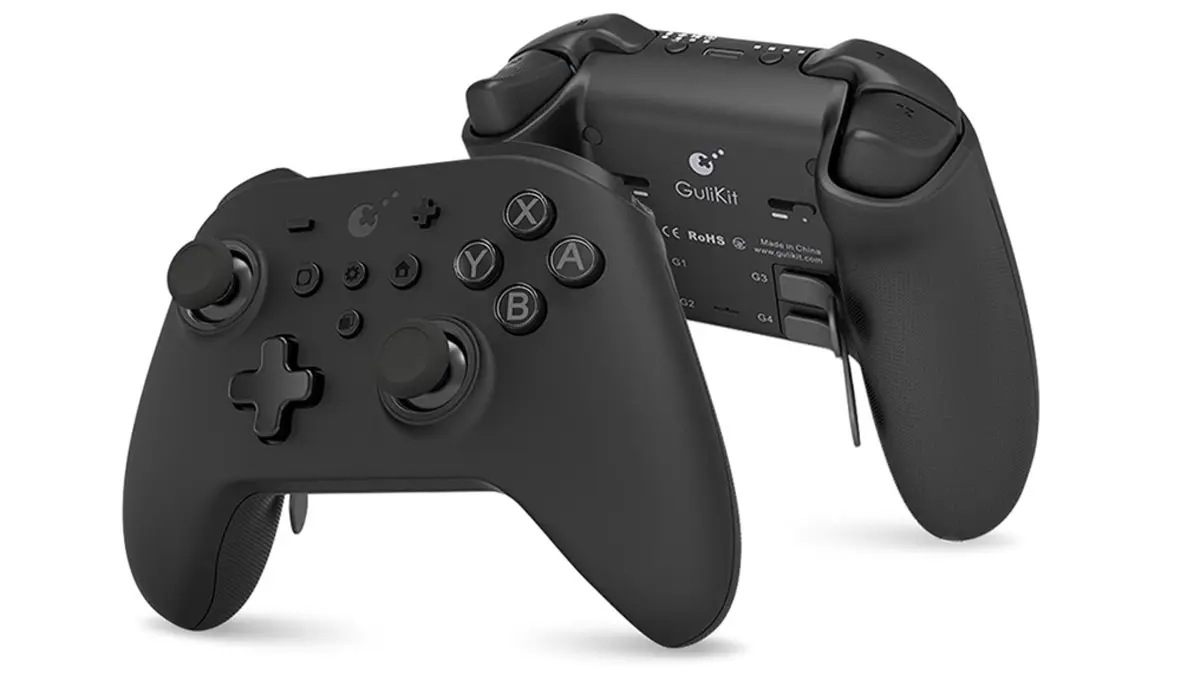
Hands-on review: GuliKit KK3 Max wired/wireless game controller
GuliKit's KK3 Max game controller is a customisable pro-style controller for PC, Switch and mobile gaming.
Third-party game controllers usually fill me with horror. Too many times, as a guest, have I been handed knock-off controllers made from eggshell plastic with sticky, unresponsive thumb sticks. Even on PC, my go-to controller is an Xbox Series X controller.
But the Gulikit KK3 Max is something special. Designed to the same quality level as the Xbox Elite controllers, it is a premium device for the more discerning gamer.
The controller is designed for PC gaming (utilising Xinput) and is compatible with Switch, mobile and Mac. It does not work with Xbox or PlayStation consoles, even when connected with a USB cable.
Out of the box, the controller arrives in a flip-top plastic shell case with a compartment that houses the PC 1000Hz Hyperlink wireless adapter and a tool for removing the action buttons. There's also a little box of accessories and a USB Type-A to Type-C charge/wired connection cable. The little box contains a selection of optional paddles for the rear of the controller and replacement X, Y, A and B buttons for an arrangement similar to an Xbox controller.
The controller feels solid in your hands. It has practically the same design as an Xbox Series X|S controller. So, if you are used to an Xbox controller, the KK3 is going to feel very familiar.
Connecting to devices is easy. There is a button on the top right of the controller that can be used to select from Switch, Windows, or Android, using Bluetooth or wired connections or a direct connection to a PC via the wireless adapter. This button is also used to turn the controller on and off, but I found that pressing any button will turn the device on. The top left of the controller has a pairing button for Bluetooth connections.
I'm partial to wireless devices that come complete with their own wireless adapters. It's much easier to plug in a dongle and get going than faff around with a Bluetooth connection that may or may not work. After an initial pairing process, using the 1000Hz Hyperlink wireless adapter with my PC meant that I never had to worry about connecting the controller again, it just worked every time I picked it up.
Like other pro controllers, the rear of the device has four optional paddle switches. There are no instructions on how to insert the paddles into the slots (or remove them, for that matter). I had to search for a video on the internet. They just click in place, but the socket looks so fragile, and the first time you install them, they are quite stiff and need a bit of force. Taking them out left an indent in the plastic surrounding the slots. Also, with the paddles installed, the controller no longer fits in the case.
The four optional rear paddles switches can be mapped to any other button but not a combination or macro. I found this useful as I hold a controller "old-school" with my trigger fingers on the triggers, thus unable to press the shoulder buttons and the triggers. By mapping the shoulder buttons to the top set of optional switches and using the smaller rounded paddles, I could throw grenades and fire in Call of Duty Black Ops.
There's some additional customisation and automation. A couple of switches on the front of the device allow you to change the triggers from analogue hall switches to digital microswitches. The controller can also be set for motion aim assist, joystick dead zones on or off, joystick sensitivity and the D-pad in four or eight-direction mode. Auto Pilot Gaming (AGP) allows players to record macros and play them back with one button press. The AGP button looks like the view button on an Xbox controller, which was weird when I first pressed it without reading the instructions. Whilst I found the above interesting to tinker with, the controller works well without messing about, straight out of the box.
The controller lights up when switched on. The Gulikit logo and the rings around the thumbsticks illuminate. There are a few customisation options, such as pulsing, but I found the solid blue to look very nice.
I got a few hours of use out of the battery between charges. The 950mAh battery is integrated but apparently replaceable. You'll need to unscrew the controller, like a PS5 controller, to get to it if the battery fails.
The controller has a built-in accelerometer, a six-axis motion control gyroscope and beefy vibrating force feedback. And, pretty cool for a third-party controller, the KK3 Max also supports Nintendo Amibos when used with a Switch. To keep the controller at peak performance, the thumbsticks, triggers, and internal gyroscope can be calibrated.
I used the controller for my entire PC Call of Duty Black Ops 6 campaign playthrough as well as Horizon Zero Dawn Remastered. The controller was responsive and nice to use. The force feedback vibrations feel solid offering an immersive gaming experience as good as, if not better than first-party controllers.
The Gulikit KK3 Max is a great third-party controller that I'd recommend for PC gaming. Mobile gamers may find it useful as well, although other options may be better. Switch owners will get a controller that is superior to the Switch Pro Controller.


